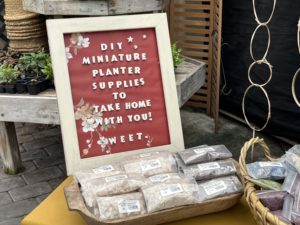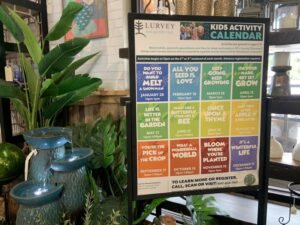Dollars & Sense: The Gross Profit Myth
Editor’s Note: Say hello to our newest columnist, Bill McCurry. If you’ve heard Bill speak at major industry events, you know his formal education is in finance, which he taught at the graduate level. Although he wasn’t born into the lawn and garden industry, he did grow up in and ultimately run his family’s retail businesses. Combine Bill’s training, experience and marketing knowledge with his consistent visits to garden centers and greenhouses everywhere he travels and you’ll know why his columns will be both educational, eye-opening and, best of all, financially rewarding.
Forget “gross profit” that over-used and often misunderstood term just costs you money. Your employees think you are making 10-50 times the profit you actually are. Surprised? Go ahead and have an employee meeting and ask them, “How much profit do you think we make?” You’ll be shocked at the numbers. Be glad your average employee isn’t your tax auditor.
Unfortunately, most employees don’t process the concept of gross profit very well. They hear profit dollars or gross profit and translate those terms to mean net profit. So for clarity’s sake, let’s define the difference between our cost and what we charge the customer as gross margin. Remember, gross margin is the biggest single contributor to whether you will make a profit this year or suffer an operating loss.
Let’s look at some techniques others have used to increase gross margins. Pricing is 99 percent of the issue. We spend more time arguing and negotiating with vendors for lower costs than we do trying to collect more from our customers. Now I’m not suggesting you give your vendors whatever prices they ask, but I do urge you to collect from your customers the prices you deserve.
Raise Your Prices
Yes, you heard it right get what you deserve. Chances are you sell many price-sensitive items; it is OK to be competitive with those items. However, your customers probably have no idea what the price is on 80 percent of your SKUs. Increase your margin on these “blind” items.
Try this the next time you bring in a new item. Without telling them the cost, ask your salespeople what they think the sale price should be. In an informal study we found in almost every instance the employees priced the new item higher than the boss did. Those are margin dollars that are slipping through your fingers.
The power of raising the prices of your non-competitive products is surprisingly strong. Think about raising the selling price on the slowest moving 10 percent of your inventory (based on annual sales dollars). If you raise the selling price of 10 percent of your products by 10 percent, you’ll add one full percentage point of annual sales to your net profit. In other words, if you’re selling $1,000,000 a year, find the slowest moving products that account for $100,000 in sales. Raise the price on those products by 10 percent, and you’ll add $10,000 in net profit to your company.
Why just the slowest 10 percent? No reason. You certainly can raise the selling price on many products by more than 10 percent. Using the above example, if you raised the slowest moving 20 percent of your products by 15 percent, you would add $30,000 to your net profit. (Technically, you’ll have some increased credit card or other variable costs, but you can see the impact is huge.)
Here’s another idea: Are you still ending your selling prices in $.50, $.75 or $.98? Instead end Á every price in $.99. One California retailer added $5,000 in gross margin to his bottom line by raising all $.95 endings to $.99 and not a single customer noticed.
In the same vein, do you have products you sell at $27.99? Do you really think you’ll hurt sales if you charge $29.99? Unless it is a very hot and competitive product, your customer probably won’t pay any attention. If your product is looking really good, fresh and lush, don’t be afraid to raise prices. I often quote Mike Berns, Berns Garden Center, Middletown, Ohio, who advocates meeting every delivery truck, whether it is from his own fields or from an outside grower. Berns looks at the quality of each shipment and when it is above average, he raises the selling prices. He says doing this adds $500 to $1,000 a week to his gross margin. “Everyone is willing to take a markdown when the product is beyond its prime. We should also take a markup when the product is above prime.”
Percentage Points Or Dollars?
Traditionally, we focused on gross margin as a percentage of sales, always aiming for as large a percentage as possible. Today, many retailers realize that you pay your bills with dollars, not percentage points, so they’re willing to sacrifice a few percentage points if they can garner more gross margin dollars.
Nichols, a New Zealand garden center chain, sells many products at a sliding scale for bulk discounts. For example, their Potted Colour plants retail for $1.95 each. To simplify the example, let’s assume Nichols buys the plants from a wholesaler for $1 each. Thus, for every one plant sell, they gain $.95 in gross margin. To entice the customer, they offer six plants for $10, which is $1.67 each or a 15-percent discount. This gives Nichols $4 in gross margin. To attract larger purchases, the company offers the Gardener’s Dozen, 13 plants for $20 ($1.54 each). This gives the customer a 21-percent discount and gives Nichols $8 in gross margin from the sale.
The purists among us might question if Nichols needed to give 21-percent off to generate sales. Nichols would answer that the pricing gives the impression of a sale and that entices purchases, without giving away gross margin to those shoppers who only buy one or two plants. It is a trade-off of percentage points for more dollars.
Let’s look at this from another perspective. Consider a product you are going to close out at half-off. If you have a two-for-one sale instead, you generate the same percentage gross margin; however, when you require the customer to buy two to get the discount, you’re doubling the total dollars collected. As a bonus, your inventory will move out twice as fast.
Differentiate For Dollars
When your product is different, you don’t have to compete on price alone. Jim Hole of Hole’s, St. Albert, AB, Canada, is proud of his poinsettias. Hole buys a plastic ring that holds the leaves up and out from the base of the pot. This not only makes the plant display better, it provides a physical distinction between Hole’s poinsettias and what is available at more price-oriented retailers. Customers don’t have to be horticulturalists to see Hole’s plants are “different.” Since they’re bigger, they’ll obviously command a higher price. Sometimes a sheet of colored paper wrapped around a pot along with a bow that costs pennies can command extra dollars. Give the customer something visibly different that makes your product stand out, and you will have the ability to generate more gross margin dollars.
Be Open To New Ideas
Deborah Sirman of Greenland Garden Centre, Sherwood Park, AB, Canada, admitted, “I didn’t like Kelsey’s idea. I told her ‘No,’ but she kept asking. Finally I said, ‘Just do it if you want, but I don’t want to talk about it.'” The issue? Kelsey Walton, one of Greenland’s managers, had seen a display of red hats that would fit in a less than 3×3-ft. area. These weren’t hats to keep the sun off in the garden; these were hats worn by members of The Red Hat Society and other women who want to make a statement.
Walton felt the hats would appeal to Greenland’s customers. The Red Hat Society had an active group in the Sherwood Park-Edmonton area. Walton also was attracted by the good margin in a product like this, as well as the fact that these products can’t be shopped around. The hats are a blind item that allows Greenland to sell them at almost whatever price they desire. The price can be set based on value to the customer without regard to a “cost plus” pricing model.
The result? In the first season, Greenland sold more than $60,000 in Red Hats. No, that’s not a typo. They had great difficulty keeping the hats in stock until they started buying them in huge quantities. There are at least three Red Hat lessons for us: One is to be aware of unique products that fit your store’s personality and that your existing customers would buy. Greenland has a gift department where they felt the hats would fit right in.
The second lesson is that Sirman, the boss, wasn’t afraid to rescind her initial negative response when Walton made a good business case for going ahead. This says a lot about both their working relationship and their ability to jump on a new opportunity.
Third, Walton was rightfully attracted by the fact that they could charge “what the market will bear” without worrying about price competition. We asked if she had been able to “keystone” the hats, doubling the cost or making 50 percent gross margin. Her response was a giant grin. With traditional Canadian understatement she said, “Oh, we do quite well with this product.”
The point is that gross margin feeds your bottom line. It’s that simple, and it’s so often overlooked.


















 Videos
Videos





